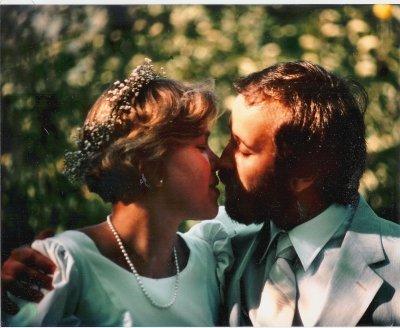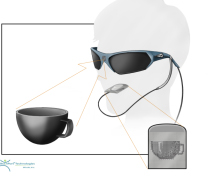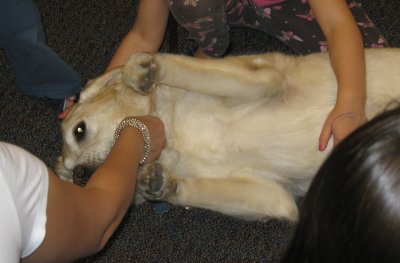Beautiful
October 28, 2010 • 8 Comments • Posted in blindness, Blogroll, Braille, Uncategorized, Writing for ChildrenNone of the events I presented at in Madison last week had much to do with children’s books, but I brought a copy of Hanni and Beth: Safe & Sound with me anyway. I always do.
Strangers who meet us often ask what Hanni and I are doing on the road. “I’m a writer,” I tell them, whipping the book out of my bag and waving it in their general direction. This makes them uncomfortable. I know. They’re just sure this book the blind lady is thrusting towards them is an amateur piece of work. After an initial silence, I hear the pages start to turn. Gasps. “It’s beautiful!” they say, unable to hide the surprise in their voices.
It was a very, very lucky day for me when Blue Marlin Publications chose Anthony Alex LeTourneau to illustrate my children’s book. This week debut authors Karen Duncan and Kate Hannigan Issa are enjoying that same lucky fate: Blue Marlin Publications launched Karen and Kate’s new children’s book last Friday, and it features illustrations by, who else? Anthony Alex LeTourneau! The Good Fun! Book: 12 Months of Parties That Celebrate Service is filled with fun ideas to encourage elementary school children to participate in service projects that can make a real difference. Here’s an excerpt From a guest post Kate wrote for Cynthia Leitich Smith’s Sensations blog:
So we presented our ideas to Blue Marlin Publications, a small house out of New York with a big commitment to giving back. Publisher Francine Poppo Rich – who had published fellow Chicago children’s author Beth Finke’s award-winning Hanni and Beth, Safe & Sound (Blue Marlin, 2007) and donated five percent of proceeds to Seedlings Braille Books For Children, a nonprofit in Michigan that sells their Braille books for less than $10 each – had a track record for giving back. It felt like a good fit.

The Good Fun Book will make a great holiday gift. And hey, if you click on this cover image, you’ll see a child pasting the cover of *our* book onto a bookcase. Good Fun!
A good fit, indeed! The Good Fun! Book hit stores on October 22, national Make a Difference Day. Publisher Francine Rich and her family joined the authors — and over 400 other volunteers — in Washington, DC last Saturday to celebrate the book launch and help build a playground with the nonprofit KaBoom. Earlier in the day, Blue Marlin President & CEO (and Francine’s delightful husband) Jude T. Rich joined Kate at Ebbitt’s Grill as she signed books for more than 200 kids at the launch of generationOn, a new young volunteers program sponsored by the Points of Light Institute.
I am so proud to be affiliated with Blue Marlin and this new book they published. What a great way to help kids learn the incredible rewards that come from service to others. And with Anthony Alex LeTourneau as the illustrator, even a blind woman can tell you: The Good Fun! Book is beautiful.




